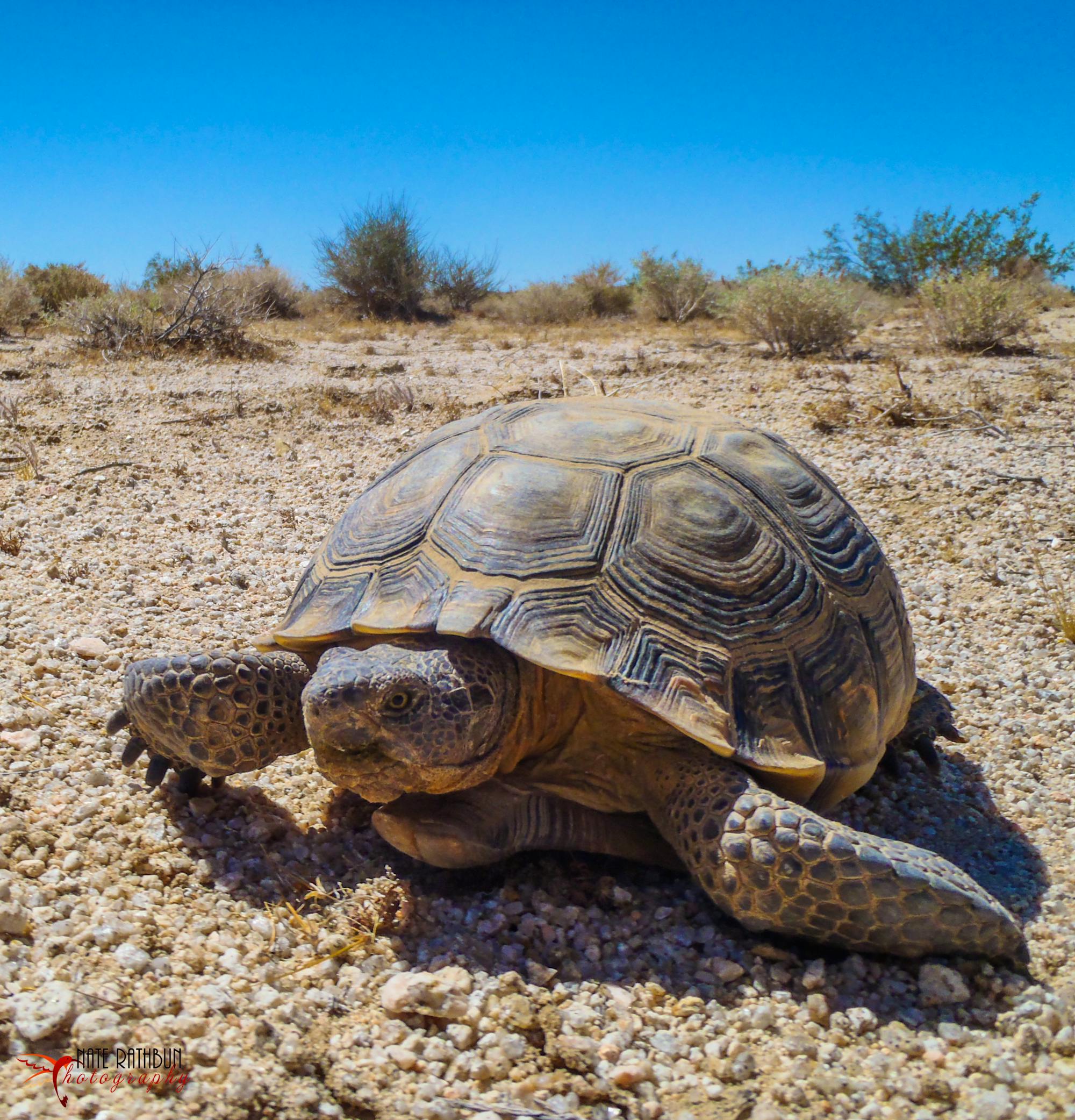Tweet"A highway has no place in a National Conservation Area and especially one that is crucial to the survival of the desert tortoise. We are pleased that the agencies are reconsidering this highway and we remain committed to fighting for the desert tortoise and the public lands that are their home."
-Vera Smith, Senior Federal Lands Policy Analyst
Update of 3pm ET 11/16/2023: The U.S. District Court issued an opinion, irrespective of BLM’s announcement, affirming the need to reconsider approval of the highway. This opinion culminates the litigation brought by Defenders and allies in 2021 challenging BLM’s and U.S. Fish and Wildlife’s decision to enable the highway. Additional information below.
Today, the Bureau of Land Management and U.S. Fish and Wildlife Service announced that they are reconsidering their 2021 decision to approve the right-of-way for a four-lane Northern Corridor Highway through Red Cliffs National Conservation Area in southwestern Utah near Zion National Park. Red Cliffs NCA is home to imperiled species like the threatened Mojave desert tortoise, which is on an extinction trajectory.
Since 2006, local residents and concerned citizens across the country have vocalized their opposition to the highway that would bulldoze through critical habitat for the Mojave desert tortoise and transform the southern portion of the National Conservation Area renowned for its scenic views, recreation, and tranquility. In January 2021, in the final days of the Trump Administration, the federal government approved the highway right-of-way despite viable transportation alternatives that meet community needs without impacting protected public lands.
In June 2021, Utah-based and national conservation organizations filed a lawsuit against the U.S. Department of the Interior, BLM, and FWS, challenging the agencies’ 2021 decision to approve the highway right-of-way. The lawsuit cited violations of the Omnibus Public Lands Management Act, the Land and Water Conservation Fund Act, the National Environmental Policy Act, the Endangered Species Act and the National Historic Preservation Act. The organizations and the federal agencies signed a settlement agreement last month.
"A highway has no place in a National Conservation Area and especially one that is crucial to the survival of the desert tortoise," said Vera Smith, senior federal lands policy analyst at Defenders of Wildlife. "We are pleased that the agencies are reconsidering this highway and we remain committed to fighting for the desert tortoise and the public lands that are their home."
“Today’s announcement highlights the seriousness of the deficiencies and errors in the original analysis and gives us hope that further study will lead the agencies to conclude that highways don’t belong in national conservation areas and critical habitat for vulnerable wildlife,” said Isabel Adler, Red Cliffs Campaign Director at Conserve Southwest Utah, the lead plaintiff in the lawsuit.
“As predicted, the Trump Administration’s environmental review and approval of the Northern Corridor Highway collapsed under scrutiny,” said Todd Tucci, plaintiffs’ attorney with Advocates for the West. “Ultimately, the Department of the Interior was forced to abandon President Trump and Secretary’s Bernhardt's conclusion that a four-lane high speed highway through a National Conservation Area and Mojave desert tortoise habitat would conserve, protect, and enhance desert tortoise and the conservation resources in the area. It wasn’t a huge lift, frankly, and it was made even easier because the Department of the Interior had previously determined on six different occasions that this highway would be ‘biologically devastating’ to the tortoise.”
As part of the litigation, the BLM and FWS acknowledged substantial and legitimate concerns with the original 2020 Environmental Impact Statement (EIS). A Supplemental EIS is being prepared to supplement this 2020 analysis, further examine the effects of granting a right-of-way, and reconsider the highway right-of-way application.
“We are thrilled that the federal government is re-examining this erroneous decision,” said Holly Snow Canada, Executive Director for Conserve Southwest Utah. “Rest assured that Conserve Southwest Utah and its partners will continue to fight for Red Cliffs NCA, because when we protect landscapes and species habitats, we’re also protecting scenic vistas, recreation opportunities, peace and quiet, and physical and mental health for ourselves and for future generations, too.”
This week’s announcement from the BLM and FWS also kicks off a scoping period for the Supplemental EIS to solicit public comments and identify issues. The public is invited to a meeting from 4:30 p.m. to 7:30 p.m., Dec. 6, 2023, at the Dixie Center, 1835 S Convention Center Dr., St. George, UT 84790, to ask questions or provide feedback regarding development of the draft Supplemental EIS.
“We are very grateful to the tens of thousands of people in Utah and across the USA who stood up for Red Cliffs National Conservation Area and opposed this unlawful, unnecessary, and unwise highway in 2020,” said Snow Canada. “Your voice is needed once again to protect this precious place.”
Located at the convergence of the Mojave Desert, Colorado Plateau and Great Basin ecoregions, the Red Cliffs National Conservation Area was established in 2009 to protect its remarkable wildlife scenery, recreation, ecology, geology and cultural value. The region is home to important populations of the threatened Mojave desert tortoise and other at-risk plants and animals including the Gila monster, burrowing owl and kit fox. The Mojave desert tortoise is on a path to extinction according to leading researchers and its habitat in Southwest Utah is especially vulnerable given recent and anticipated growth in the region.
For over 75 years, Defenders of Wildlife has remained dedicated to protecting all native animals and plants in their natural communities. With a nationwide network of nearly 2.1 million members and supporters, Defenders of Wildlife is a leading advocate for innovative solutions to safeguard our wildlife for generations to come. To learn more, please visit https://defenders.org/newsroom or follow us on X @Defenders.
Media Contact
News

Hundreds of Thousands of Americans Oppose Trump Administration Effort to Roll Back Protections for Imperiled Animals and Plant Species



